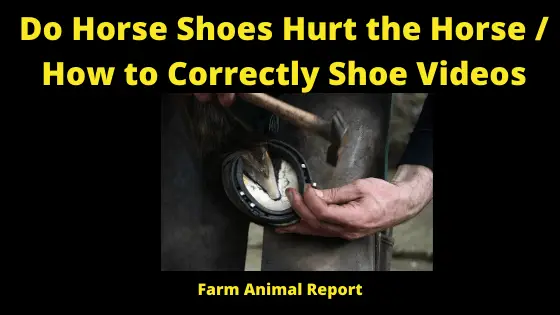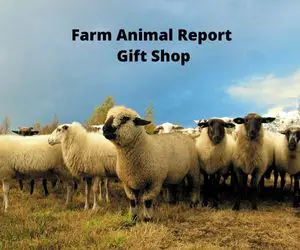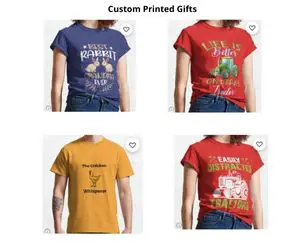Do Horse Shoes Hurt Horses
As a general rule, Domestic Horses need shoes to protect their feet from the hardened Roads, Trails that they walk on. Shoes take the wear instead of the horse’s hooves.
Do Wild Horses Need Shoes? (Horseshoes)
Some horses may require shoes, but most do not. Wild mustangs and feral horses generally don’t need them because they’re accustomed to walking on all types of terrain. If a horse’s hooves are healthy and trimmed regularly, its feet will be strong enough for it to walk without injuring itself or wearing down the soles of its feet. However, if a horse is stabled or spends most of its time on soft surfaces like grass and dirt, it’s possible that the animal might need shoes to protect its feet from unnatural stress and strain. Do Horse Shoes Hurt Horses?
Check Out Amazon’s Resources for Raising and Training Horses
Jump To 10 Ways Horse Farmers Make Money.
How to Horse Shoe Properly (Horses Wear Shoes)
Do Horse Shoes Hurt the Horse – A horseshoe is a fabricated product, normally made of metal, although sometimes made partially or wholly of modern synthetic materials, designed to protect a horse hoof from wear.
Shoes are attached on the palmar surface (ground side) of the hooves, usually nailed through the insensitive hoof wall that is anatomically akin to the human Toenail although much larger and thicker. However, there are also cases where shoes are glued.
The fitting of horseshoes is a professional occupation, conducted by a farrier, who specializes in the preparation of feet, assessing potential lameness issues, and fitting appropriate shoes, including remedial features where required. Since there are no nerve endings in the outer section of the hoof, a horse doesn’t feel any pain when horseshoes are nailed on.
Do Horse Shoes Hurt Horses – Since their hooves continue to grow even with horseshoes on, a farrier will need to trim, adjust, and reset a horse’s shoes on a regular basis. The hoof is a hard, human-nail-like material, so nailing, hammering, and fitting red-hot shoes into it doesn’t hurt the hoof, however, there are soft parts of the foot within the hoof, as well as many nerves, which you must be careful to avoid.
See Our Guide – 10 Ways Horse Farmers Make Money
Horse Shoes / Barefoot (Do horseshoes hurt horses)
You could think of it somewhat like your teeth: we numb the area mainly for the nerves and vibrations that go through the gums/jaw, but the actual tooth feels no sensation when drilled. Some horses are kept ‘barefoot’ for many reasons, including cost, fear of farrier after a bad experience, doesn’t stand for long enough to get them done, doesn’t like their feet held/touched, and riding discipline doesn’t require it.
Ideally, a horse should also have a great confirmation (posture/build) that they don’t require shoes and their feet position correctly with minimal trimming and no shoes.
Things That Can Cause Pain When Shoeing the Horse (shoes horses)
When the horse has bruises from not wearing horseshoes
If you have ridden the horse on hard surfaces without horseshoes the animal may have gotten bruises under the hooves. When the farrier will clean the hooves and mount the horseshoes this can be a hurtful process.
This is because the hoof is sore and possibly swollen around the hoof. This can probably be compared to when you have inflammation at the side of your nail and you need to clean it and you start tapping the nail.
This is not pleasant to the horse and you can avoid it by visiting the farrier in due time so the horse is not ridden without horseshoes.
When an Unexperienced Farrier Drives the Nail Too Deep (horse hooves)
If the farrier (or someone without experience) hasn’t got much experience, he/she might accidentally drive the nail too deep into the hoof. This can be very painful, and it is best compared to driving and nail into your skin. The flesh underneath the hooves (sensitive laminae) is very sensitive and should not be messed with during the procedure.
Hot Nail
This is called a “hot nail” and when it goes wrong you will have an instant reaction from the horse. It would let you know immediately what is going on. Similar to your own reaction if someone drives a nail through your fingernail and into the sensitive skin. Any farrier with experience knows exactly how to work around this so it doesn’t happen. This is exactly what the farrier is trained to do and they will very rarely miss.
When the Horseshoe Doesn’t Fit
If you mount horseshoes that are either too small or too large it will cause trouble and possibly pain for the horse. You also need to make sure the shoe is shaped correctly. The hooves are shaped a little differently for each horse and you need to pay careful attention to the shape and form when you prepare the horseshoe. If the horseshoe doesn’t fit it might end up cracking the hoof and this can cause pain for the animal if it’s not treated quickly.
Discomfort from the Loud Hammering Noises
Some horses do not handle the loud noises from the hammer very well. They might get scared or frightened from the loud sounds it makes when the farrier is correcting the shoes. Remember, that the farrier will first measure the horseshoe a couple of times while hammering it into the correct shape. Then it can be mounted unto the hoof.
The best thing you can do here is to stay close to your horse and make sure it knows exactly where you are during the process. Remember that horses have blind spots behind them and if you are standing directly in front of their nose. The farrier might also let you hold the animal during the process.
You can also bring some of the horses’ favorite snacks like apples or carrots. This might help calm down the animal and take the focus away from the loud noises and the smell from the smoke.
Don’t Ride Too Hard the First Day After Shoeing
You should take a day or two for the horse to get used to the shoes. This is also to make sure they are mounted correctly. So, don’t take him for a very long and hard ride just after mounting the shoe.
If something is not mounted correctly or something is itching the horse you need to take him back to the farrier to fix and fit the horseshoe correctly. This can also happen if the hoof was hurt of filed to close but normally everything will be just fine. Just take it easy the first couple of days, especially if this is the first time the horse has gotten horseshoes mounted.
How Often Should You Consult the Farrier?
You should take the horse to the farrier every month or at least every second month. But this depends largely on how much you’re riding the horse and where you are riding.
If you are riding in on hard surfaces several days of the week you need to do it monthly. Otherwise, you might be able to wait up till eight weeks before you visited the farrier with the horse. This is to ensure that the farrier can catch any irregularities in time.
Most of the time little cracks can be fixed when they are filed down and treated quickly. Otherwise, you might end up with a limping horse that you cannot ride. And that can also be painful for the poor horse.
Shoeing Mistakes
Mistakes are sometimes made by even a skilled farrier, especially if the horse does not standstill. This may sometimes result in a nail coming too close to the sensitive part of the hoof (putting pressure on it), or a nail that is driven slightly into the sensitive hoof, called quicking or nail pricking.
This occurs when a nail penetrates the wall and hits the sensitive internal structures of the foot. Quicking results in bleeding and pain and the horse may show signs of lameness or may become lame in the following days. Whenever it happens, the farrier must remove the offending nail.
Usually, a horse that is quicked will react immediately, though some cases where the nail is close to sensitive structures may not cause immediate problems. These mistakes are made occasionally by anyone who shoes horses, and in most cases is not an indication that the farrier is unskilled.
It happens most commonly when horses move around while being shod, but also may occur if the hoof wall is particularly thin (common in thoroughbreds, or if the hoof wall is brittle or damaged. It may also occur with an inexperienced or unskilled horseshoer who misdrives a nail, uses a shoe that is too small, or has not fitted the shoe to the shape of the horse’s hoof. Occasionally, manufacturing defects in nails or shoes may also cause a misdriven nail that quicks a horse.
Skilled Farrier / Professional Horseshoer
However, the term “farrier” implies a professional horseshoer with skill, education, and training. Some people who shoe horses are untrained or unskilled, and likely to do more harm than good for the horse.
People who do not understand the horse’s foot will not trim the hoof correctly. This can cause serious problems for the animal, resulting in chronic lameness and damage to the hoof wall.
Poor trimming will usually place the hoof at an incorrect angle, leave the foot laterally unbalanced and may cut too much off certain areas of the hoof wall, or trim too much of the frog or sole. Some horseshoers will rasp the hoof down to fit an improperly shaped or too-small size of shoe, which is damaging to the movement of the horse and can damage the hoof itself if trimmed or rasped too short.
A poor horseshoer can also make mistakes in the shoeing process itself, not only quicking a horse, but also putting the shoe on crooked, using the wrong type of shoe for the job at hand, shaping the shoe improperly, or setting it on too far forward or back.
Other Important Tags
- wild horses’ hooves get much more exercise on their hoofs than domesticated horses
- horseshoes and the shoeing process do not hurt
- shoeing a horse really does not hurt them
- horseshoes do not hurt horses
- do horseshoes hurt horses – but it depends
Conclusion – Why Do Horses Need Shoes
A properly fitted and installed on the Horses Hoof will not Cause the Horse any discomfort. A Bad Outcome can come if these are present
- Bruises
- Cracked Hoof
- Un-even Hoof
- Defective Nails / Shoes
- Inexperience
- Nervous Horse
Horse Breeder Associations
| Horse Association | Country | Link |
|---|---|---|
| Blacksmith Association of North America | United States | ABANA |
| Applacia Charter of BlackSmith | United States | AACB |
| Horse Breed Associations Resource | United States | EQUUIS |
| United States Horse Breeder Association | United States | USSHBA |





